Heartbreak is a complex emotion that can dig its claws so deep into your heart that it feels impossible to escape its grasp. In most cases, some time can heal it. You start to forget names, faces, or entire memories, although sometimes, even time isn’t enough to cure a broken heart. In Hiroshima Mon Amour, directed by Alain Resnais in 1959, time is altered within the film to discuss how it can impact love and loss. Resnais beautifully portrays the psychological effects heartbreak can have on a person through a love affair of an unnamed man and woman. A story of heartbreak is re-opened through flashbacks and, in a small way, can be compared to the heartbreak felt in Hiroshima on August 6th, 1945.
Resnais was a very composed man and his films didn’t usually follow the same refreshing style the French New Wave is known for. The French New Wave took place after World War 2 and France was still recovering from it. Because of this context, Hiroshima Mon Amour takes on a different meaning as it is almost a memorial instead of a fresh start that many other directors used the insipid period of time for.
The film was shot entirely in Hiroshima, Japan and came out only 14 years after the nuclear bomb was dropped. Yes, 14 years seems like a long time, but for the citizens of Hiroshima, the wound was still healing. Resnais pays tribute to the victims of the bombing by using the first 15 minutes of the film to show footage of the collateral damage as well as the Hiroshima Peace Memorial Museum. The unnamed woman is narrating what she saw and what she learned about the tragic event. Resnais walks us through the memorial where the music starts out fun and lighthearted. Soon, it starts going faster and becomes more manic, coupled with graphic photos and videos of the survivors and torn belongings. We are reminded first and foremost, before anything else, that this is part of history and that it is irreversible. It’s unsettling to see actual footage of the survivors in clear and remastered film. This part is definitely not for the faint of heart.
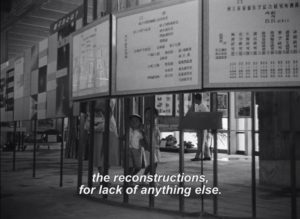
A mother and her children at the Hiroshima Peace Memorial Museum.
Surely, there is something that isn’t heart wrenching in this film, right? If happy-go-lucky films are what you’re looking for, this is not the right place. Even the love story is quite sad. The unnamed man is Japanese and the unnamed woman is French. She is there for a film she stars in about peace, but she is leaving the next morning. They both have spouses but feel that they’ve never had something quite like their love before. Completely infatuated with each other, they go for drinks at a café where she opens up about her past relationship that happened 14 years ago. There are never any names mentioned throughout the whole narrative. I think it alludes to the process of forgetting, since sometimes, it is easier to remember a feeling than a name.
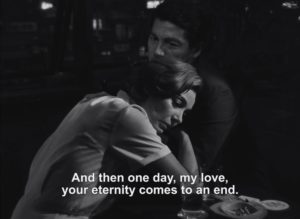
The two lovers holding each other at the cafe.
She was in love with a German soldier positioned in France during World War 2. They planned on marrying and running away together but their dream never came to fruition since he was killed. Resnais uses flashbacks to give the viewer vivid images of her and the pain she experienced. Within the flashbacks there is a continuation of time. There is a series of clips that show her going to meet up with him and seeing him just as excited while running to her. After every short clip, we know there is a whole new day ahead of them, and we can assume their history together was very long based off of the many clips.

The younger version of the unnamed woman biking to see her german love.
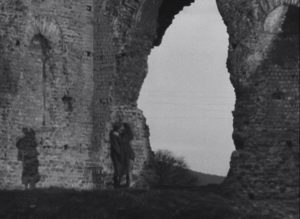
The unnamed woman and her german love embracing.
Her parents locked her up for a long time in a dingy cellar after finding out she was in love with a German soldier, also shaving her head and keeping her locked in her room for a time. She tells the unnamed man, “The ‘Marseilleaise’ passes above my head. Its deafening!” (Hiroshima Mon Amour). This is an example of how each person’s individual experiences can affect them in ways that other people will never even know about. By having the unnamed woman talk about her past while in the future, Resnais seamlessly connects both tenses. Time is like a mobius strip – there is no end and no beginning. Yet, it is what we choose to do with it that will affect the outcome of both the past and future. Without the past, the future cannot exist, and without the future, the past cannot exist. The unnamed woman let her past tie her down due to the loss she had felt. She was scared of forgetting her first love despite the fact it was 14 years ago, and she probably should have been moved on by then. It affected her so much that she still felt that same heartbreak.
Another detail I noticed was that the two seemed like they were connected on a different level of companionship, like they’d met before in a different life. Now, I’m not saying it was Resnais’ purpose to make it seem like her old German lover was re-incarnated into the Japanese man, but there are a few signs that could lead into that theory. First, the unnamed man talks to her as if he were her ex-lover and vice versa. Second, the man seems to understand how she felt when she was in Nevers, the city she grew up in, even though he only began to scratch the surface of who she was as a person.
Before the unnamed woman departs, she calls the unnamed man Hiroshima, and he calls her Nevers. They finally have names for each other. By calling each other Hiroshima and Nevers, it’s a way to never forget each other. Inevitability, they will forget pieces and parts of what they shared, but both names of the cities have ties to other parts of their lives that are so deeply ingrained into their memory. Hiroshima had the bombing and Nevers is where she lost her first love and was psychologically scarred. Even if the unnamed woman was fearful of forgetting details, she never forgot how the pain made her feel, and although the city of Hiroshima had rebuilt and generations had passed since then, it will still be part of Hiroshima’s history. Love, loss, and pain had overcome both the man and woman’s senses of time, affecting their present and future, which makes love the one thing they cannot forget.
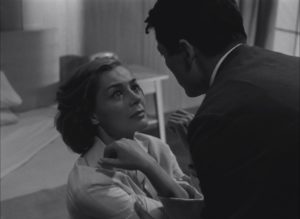
The final goodbye between Hiroshima and Nevers

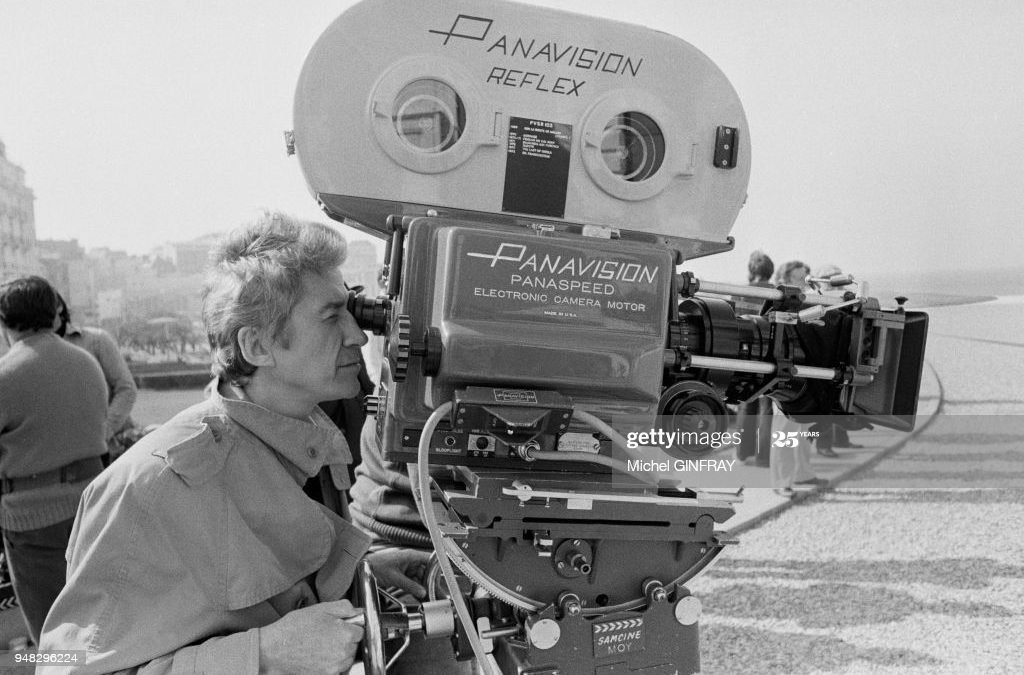
Recent Comments